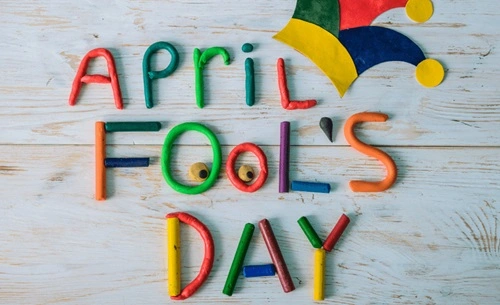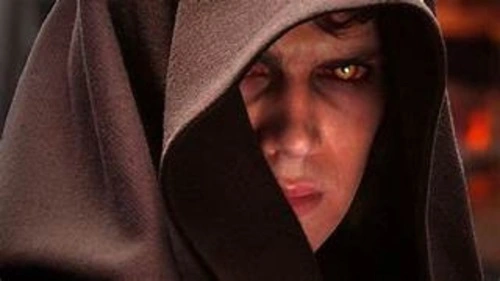April Fools’ Day, celebrated on April 1st, has been a day for pranks, jokes, and laughter for centuries. Though it’s widely recognized around the world, few people know about its origins or the unique ways it’s celebrated across different cultures. From its mysterious beginnings to modern-day hoaxes that have fooled even the most skeptical among us, April Fools’ Day has a fascinating story. Here are over ten interesting facts about April Fools’ Day that will give you new insights into this playful day.

1. The Origins Are Still a Mystery
No one knows the exact origins of April Fools’ Day. Some historians believe it dates back to the 16th century when France switched from the Julian calendar to the Gregorian calendar, moving New Year’s Day from the end of March to January 1st. Those who continued to celebrate New Year’s Day on April 1st were dubbed “April fools.” Others speculate that the holiday may have roots in ancient Roman or medieval European festivals that involved playful antics, but its exact beginning remains a mystery.
2. Celebrated Differently Around the World
While April Fools’ Day is widely celebrated, each country has unique traditions for the day. In Scotland, for instance, April Fools’ Day was historically celebrated as a two-day event known as “Hunt the Gowk” (gowk means “cuckoo” or “fool”). On the first day, people would send others on “fool’s errands,” asking them to deliver a sealed message that only requested the recipient to keep sending the messenger to someone else. The second day, known as “Taily Day,” was all about pranks involving the backside, such as sticking “kick me” signs on unsuspecting friends.
3. Newspapers and Companies Join in on the Fun
April Fools’ Day has become a day for media and companies to launch elaborate pranks, with some causing widespread confusion. In 1957, the BBC aired a segment about Swiss farmers harvesting spaghetti from trees, convincing many viewers that “spaghetti trees” were real. In 1996, Taco Bell announced it had purchased the Liberty Bell, sparking outrage until the joke was revealed. Nowadays, major brands like Google, Netflix, and even NASA get in on the fun, launching pranks that range from clever to outlandish.
4. A Day for Science Pranks Too
Even the scientific community has a tradition of pranking on April 1st. In 1976, British astronomer Sir Patrick Moore announced on BBC radio that at precisely 9:47 a.m., a unique alignment of Pluto and Jupiter would temporarily reduce Earth’s gravity, causing people to feel lighter. People called in to report that they had indeed experienced a “floating” sensation, though it was all part of an April Fools’ prank. Science and tech publications still engage in playful hoaxes today, adding a touch of humor to the industry.
5. “Poisson d’Avril” in France
In France, April Fools’ Day is known as “Poisson d’Avril,” which means “April Fish.” French children celebrate the day by trying to stick paper fish on each other’s backs without being noticed. When they succeed, they shout, “Poisson d’Avril!” This tradition dates back to at least the 16th century and remains a charming, family-friendly prank that many French schoolchildren eagerly participate in each year.
6. April Fools’ Day Is Celebrated in the Southern Hemisphere in November
While April 1st is celebrated as April Fools’ Day in most parts of the world, some people in the Southern Hemisphere observe “November Fools’ Day” on November 1st. Since April marks autumn for countries like Australia and New Zealand, people there occasionally shift the celebration to springtime in November to match the Northern Hemisphere’s spirit of spring renewal and mischief.
7. April Fools’ Day Inspired National Prank Days in Some Countries
April Fools’ Day has inspired similar holidays dedicated to pranks. In Mexico, for example, “El Día de los Santos Inocentes” (Day of the Holy Innocents) on December 28 has become a day for lighthearted pranks and jokes. Though it originated as a solemn religious observance, the day evolved into a prank-focused holiday in much of Latin America. The spirit of playful trickery, similar to April Fools’ Day, continues to this day.
8. Some People Are Not Fans of April Fools’ Day
Not everyone enjoys the tradition of pranks on April Fools’ Day. Some people feel that pranks can easily cross the line into mean-spirited territory. As a result, some organizations have started to tone down April Fools’ jokes in recent years, favoring “kind pranks” or humorous, harmless jokes that don’t target specific individuals. For example, many companies have adopted light-hearted marketing pranks rather than elaborate hoaxes, ensuring that the jokes are entertaining but not offensive.
9. The Guinness World Record for Most Whoopee Cushions Sat on in a Day
One of the classic April Fools’ Day prank tools, the whoopee cushion, even has its place in the Guinness World Records. In 2008, the makers of Whoopee Cushions sponsored an event in London to set a record for the “most whoopee cushions sat on in a single day.” Thousands of people gathered to sit on whoopee cushions, turning the prank into a world record.
10. April Fools’ Day Coincided with Easter Sunday in 2018
The last time April Fools’ Day coincided with Easter Sunday was in 2018, a rare occurrence that led to some creative holiday mashups. Families used the opportunity to play funny pranks like hiding fake Easter eggs or filling chocolate eggs with vegetables. This unusual alignment of holidays generated plenty of laughs, with Easter pranks adding a fresh twist to the usual April Fools’ shenanigans.
11. Online Pranks Have Become a New Tradition
With the rise of social media, April Fools’ Day pranks have gone digital. Many internet platforms and tech companies take advantage of the holiday to introduce fake products or services, sparking widespread excitement and confusion. Google is especially known for its pranks, such as announcing Google Nose, a “smell-search” feature, or creating fake Pokémon hunts in Google Maps. Social media users enjoy participating in these online jokes, making April Fools’ Day a digital holiday for many.
12. A Day with Rules: “April Fools’ Ends at Noon”
In the United Kingdom and other parts of Europe, there’s a rule that April Fools’ pranks must end by noon. Anyone playing pranks after midday is considered the “fool.” This tradition may have originated to limit how long people could play tricks on one another, preventing the day from becoming too disruptive. Though the noon cutoff isn’t universally followed, it’s still observed by some pranksters who consider it “bad luck” to prank past midday.
13. “Kick a Ginger Day” Inspired by April Fools’ Day (But Was Quickly Condemned)
While most April Fools’ pranks are harmless, a few misguided trends have taken things too far. In 2008, a Facebook group started promoting “Kick a Ginger Day” as a joke, encouraging people to target red-haired individuals on April 1st. This prank was quickly condemned as mean-spirited, and schools and organizations issued warnings against such harmful actions. The incident serves as a reminder of the importance of respecting boundaries and keeping pranks friendly and considerate.
14. The April Fools’ Day Capital of the World
In recent years, the city of Hilaria in Spain has started branding itself as the “April Fools’ Day Capital of the World.” Hilaria celebrates the holiday with elaborate pranks, performances, and comedy events, transforming the city into a hub of humor and laughter. While Hilaria’s claim is more of a promotional stunt, it has gained popularity as a destination for tourists looking to join in the April Fools’ Day spirit.
Conclusion
April Fools’ Day continues to be one of the most entertaining, unexpected holidays celebrated worldwide. With traditions ranging from paper fish in France to media hoaxes and digital pranks, the day offers a chance to lighten up and bring humor into our lives. Whether you’re a fan of elaborate hoaxes or simple pranks, April Fools’ Day reminds us to embrace laughter and not take life too seriously, if only for a day. As the holiday evolves with new technologies and customs, it continues to reflect our love for fun, connection, and the unexpected.



